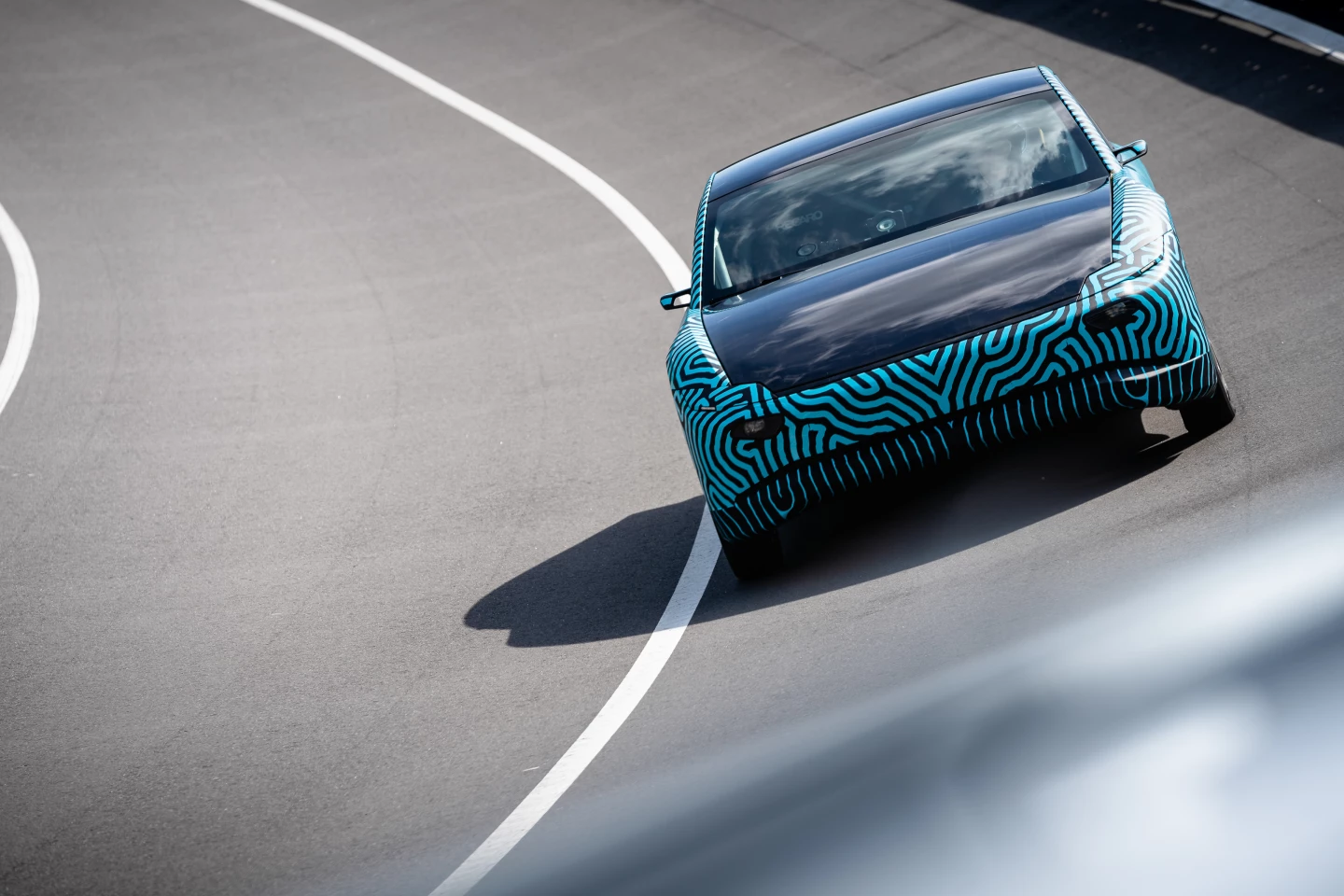In development since 2017, the Lightyear One solar EV made it to the pre-production prototype stage a couple of years later and promised a per-charge range of 725 km (450 miles) on the WLTP cycle. Now the development team has taken its validation prototype to a test track in Germany, where it clocked up 710 km on a single charge of the 60-kWh battery.
Where the Sion family car from Germany's Sono Motors has solar cells integrated into the hood, roof, doors and rear, the Lightyear One five-seater packs PV panels into its roof and hood only.
Thanks to recent battery upgrade, the Sion is now reckoned good for between 255 to 305 km (158-190 miles) per charge, though the solar cells are only expected to contribute around 245 km (152 miles) of range per week so the family EV will still need to be plugged in. And it's a similar story for the Lightyear One, the integrated photovoltaics are estimated to contribute around a maximum of 12 km (7.45 miles) extra range for every hour in ideal sunbathing conditions.
That said, it's now proving to be quite the efficient drive, recently spending almost nine hours on the track at the Aldenhoven Testing Center at a speed of 85 km/h (52.8 mph) before its 60-kWh battery ran out of juice. By then it had clocked up some 710 km (441 miles).
"After four years of hard work and in-house development, this is a very important engineering and technological milestone," said co-founder and CEO, Lex Hoefsloot. "It validates the performance of our patented technology and truly shows that we are able to deliver on our promise to introduce the most efficient electric vehicle. This prototype has over 440 miles of range with an energy consumption of only 137 Wh/mile at 53 miles an hour. Even the most efficient electric cars in the market today consume around 50 percent more energy at this relatively low speed."

The company says that the full drive cycle has helped validate assumptions made about the vehicle's performance, and allowed for such things as yield measurement of the solar panels and other key metrics to be recorded. A total of 3.45 kWh of energy came from the PV cells during the test drive, for example, and overall energy consumption worked out at 85 Wh/km. The data gathered will inform upcoming improvements, with a view to achieving similar energy consumption levels at highway speeds.
"Lowering the energy consumption per mile of an EV means that you can provide a lot of range on a small battery," added Hoefsloot. "Because batteries are the most expensive part of an EV, you can lower the purchase price of the car and achieve affordable electric cars with a lot of range that don’t need a lot of charging. Low-energy consuming cars can also benefit a lot more from adding solar cells to the car and gain about 45 miles of charge on a sunny day."
This first validation test is not an official WLTP drive cycle test, that is still to come, along with such things as crash tests, as the company nears production-ready status. The first 946 vehicles are expected to go into production in the first half of 2022, ahead of entry into the mass market from 2024. The video below has more.
Source: Lightyear






